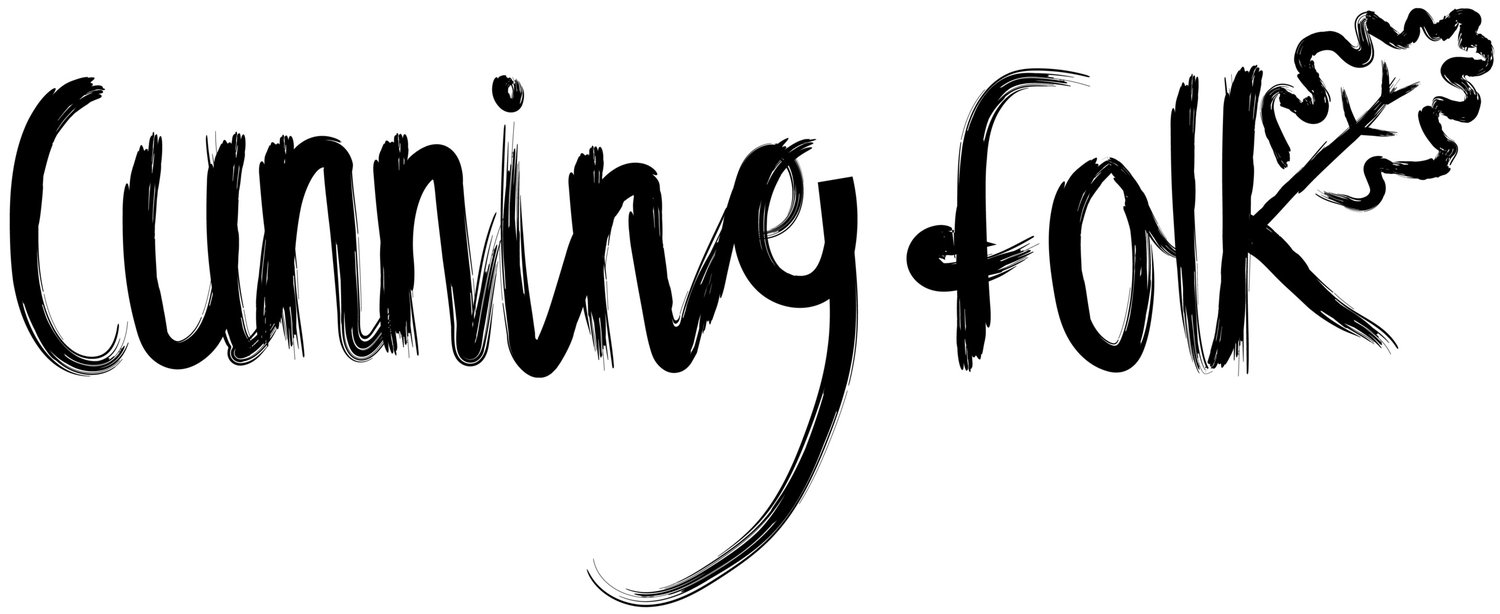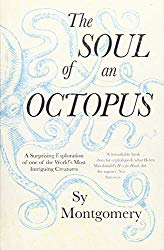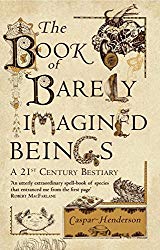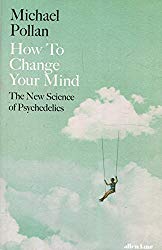Yoga is now ubiquitous in fitness studios around the world. Many practitioners enjoy it as a workout, focusing on the asanas (Sanskrit for “postures”), with the added dimension of relaxation through various techniques of pranayama (the Sanskrit word for breath control). But yoga, notoriously hard to pin down, is far deeper than its modern iteration. And its influence on the occult and esoteric traditions is tremendous.
Yoga was brought to the Western world both as an import and export; Indian yogis such as Krishnamacharya, Vivekananda, Yogananda and Sivananda helped systemise yoga in a way it could be consumed in the west. Then there were occultists such as Madame Blavatsky, Aleister Crowley and WB Yeats who transmitted yoga through new translations of ancient texts. Yogic philosophy continues to influence the Western Occult and the New Age movement, though it is often buried beneath new jargon. In recent years, there has been much scholarship on the invention of modern postural yoga, and a returning interest to the more esoteric, eclectic side of this practice with roots in Ancient India. If overwhelmed by the sheer volume of literature on this vast subject, here are some reading suggestions to begin.
The Truth of Yoga by Daniel Simpson
Daniel Simpson lays out an accessible history of yoga, drawing from recent scholarship. Tracing its early mentions in early Vedanta literature and renunciate culture through to modern postural practices, he challenges the idea of authenticity and ancient lineage—the idea that one way is the right way—instead presenting an eclectic, ever-evolving tradition that has changed with each transmitter. Simpson, who teaches at the Oxford Centre for Hindu Studies, invites the reader to tell new stories about yoga that meet the challenges we are facing now, such as climate change and global inequality. He also introduces a lot of ideas with which occult practitioners will be familiar, but under different names. He writes: “Western fascination with the mystical East had inspired occult groups—led by the Theosophical Society—to translate texts, supplementing the efforts of colonial scholars. In their quest to find a common truth behind all religions, they were drawn to study yoga because of its focus on direct experience. “Much of the modern western occult is a tapestry of imperial spoils, intangible as well as tangible, largely syncretised and hidden beneath new terms—you may recognise many esoteric ideas and practices in the history of yoga. A fascinating text, suggested to yogis, as well as occult practitioners looking beyond lineage claims.
The Ten Principal Upanishads (co-translated by WB Yeats and Shri Purohit Swami)
If you’ve been in the occult community for a while you’ll have heard the terms “Vedanta” and “Vedic” literature floating around. These are the oldest scriptures of Hinduism, and the most recent of these Vedic texts are known as the Upanishads. These texts document a wide variety of rituals and esoteric knowledge in Sanskrit. A central theme is the awareness of atman—known as purusa in Patanjali’s sutras—the higher self, the divine, the witness who sits inside every one of us and connects us to something larger than ourselves. From the Paramananda Upanishad: “He who sees all beings in his Self and his Self in all beings, he never suffers; because when he sees all creatures within his true Self, then jealousy, grief and hatred vanish.” Elsewhere in the same Upanishad: “He who is rich in the knowledge of the Self does not covet external power or possession.” The Upanishads have inspired philosophers, occultists, writers, artists, scientists, and those interested in metaphysics, including the likes of Schopenhauer, Emerson, Thoreau, and Christopher Isherwood. Around 108 are known, but this book presents ten of the most important. Poet and occultist WB Yeats was a searcher, a member of both the Theosophical Society and The Hermetic Order of the Golden Dawn. In his foreword, Yeats expresses his hope that in reading these ancient ideas from the East, we might recover the mysticism we have lost in the west. From the Brihadaranyaka Upanishad you may recognise the concept of Will, employed later by Crowley: “You are what your deep, driving desire is. As your desire is, so is your will. As your will is, so is your deed. As your deed is, so is your destiny … ".
The Yoga Sutras by Patanjali
Considered a core text to modern yogis, the unknown sage Patanjali is credited as synthesising pre-existing, older knowledge about yoga such as Samkhya philosophy, Buddhism, Jainism, and Vedanta, through 196 succinct sutras (the Sanskrit for “threads”). These sutras explain what yoga is, why it is necessary and what is to be gained from practising it—as well as what is to be lost by not practising. Written at least 1700 years ago, little is known about Patanjali, who may be one person or many or more of an archetypal sage channelled across several centuries. The second sutra defines yoga, in Sanskrit: Yogas citta vrtti nirodhah: “Yoga is the arresting of the fluctuations of the mind.” He goes onto say why you’d do this: “Tada drastuh svarupe vasthanam”—”Then the Seer abides in its own nature”—or then consciousness is drawn back to the purusa or atman. Patanjali lays out key ideas about the eight limbs of yoga: 1. Yama (community ethics) 2. Niyama (personal observances) 3. Pranayama (Breath regulation/control of life-force). 4. Pratyahara (Withdrawal of senses and focus inwards) 5. Dharana (concentration) 6. Dhyana (Meditation) 7. Samadhi (enlightenment/merging with the purusa). He explains concepts such as avidya (ignorance) and vidya (clear understanding) which could be compared to the modern psychological concept of shadow work, different ideas about samadhi, and liberation, before, in the final chapter, presenting more supernatural ideas about what happens when one has gained a mastery of yoga, including the ability to fly through the air, telekinesis, and superhuman strength, a part of the text largely disregarded by modern practitioners. Of the asanas, one of eight limbs of yoga, Patanjali says: “sthira sukham āsanam” or “asana means a steady and comfortable posture,” which sounds a lot like sitting down comfortably.
The Hatha Yoga Pradipika by Svātmārāma
“The entire universe is just a creation of thought. The play of the mind is just a creation of thought. Abandon the mind which is only thought. Take refuge in the changeless, O Rama, and surely find peace.” Another highly influential text on modern yoga, this classic 15th-century text again synthesises a selection of knowledge on yoga. It is quite practical in nature, recommending that “the Hatha yogi should live in a secluded hut free of stones, fire, and dampness to a distance of four cubits in a country that is properly governed, virtuous, prosperous, and peaceful.” Noted for its misogyny and weirdness, yogi Svātmārāma shares purification methods, 84 asanas, pranayama techniques, spiritual centres of the body (chakra), Kundalini, bandhas, channels of the body (nadi, similar to the concept of Meridian lines in Chinese medicine) and symbolic gestures (mudra). The asanas are predominantly close to the ground, focussed on fanning things that need eliminating into the Agni (sacred fire) located around the solar plexus and responsible for digestion—much of it borrows from Ayurveda, an ancient system of traditional Indian medicine. Memorable advice includes details on how to induce an enema in a river using a hollow bamboo stick, swallowing a rag to remove excess mucous and a breathing technique where you inhale making the sound of a male bee and exhale making the sound of a female bee, to fill the mind with bliss.
The Secret Doctrine by Helena Blavatsky
Madame Blavatsky’s influence on the modern occult, esotericism and new age beliefs is undeniable. In the 19th century, she founded the Theosophical Society, and is credited as one of the early transmitters of Eastern beliefs, including key ideas from Buddhism and Hinduism, and indeed, yoga. She travelled widely, fusing together converging ideas about the divine and the supernatural, and recorded her ideas in two texts, Isis Unveiled and The Secret Doctrine. The latter was a commentary on what she claimed came from Ancient Tibetan manuscripts: a secret doctrine known to Plato and the early Hindu sages, which she says predicted the age of materialism, and its subsequent decline. She writes that a secret brotherhood has conserved this ancient wisdom and are capable of paranormal powers. She details her beliefs about the origin of the universe, borrowing from the Hindu concept of cynical development, reincarnation and karma, and the Platonic idea of Anima Mundi, or a world soul. She held that all religions were in some way true, but that these South Asian religions were closer to the truth. Raja yoga comes up frequently in this text, spoken of in esoteric terms. As a spiritualist, Blavatsky was accused of producing fraudulent paranormal apparitions, and the link to Tibetan masters is sketchy, which led many to think her a Charlatan. The questionable founding myth, as we shall see, is common in most new religions and not unique to Theosophy. Nevertheless, the myth and her teachings had staying power, captivating countless artists and writers, among which were WB Yeats, Lewis Carroll, Thomas Edison, Jack London, James Joyce, Arthur Conan Doyle, Hilda af Klimt and Kurt Vonnegut. Her ideas continue to resonate with readers today and influence modern esotericism.
Eight Lectures on Yoga by Aleister Crowley
Another occultist most of us will have at least heard of is Aleister Crowley. Crowley was a member of the Hermetic Order of the Golden Dawn, another 19th-century society with a compelling myth about its origins, which drew from Freemasonry, Qabalah and Hermetic Magic, occult tarot and Geomancy, among other ideas. After leaving this secret society, he set off around the world, like other affluent searchers of his time, seeking an alternative spirituality to the one he was raised with. In India he studied Raja yoga, before returning to Britain and co-founding the A. A., and the O. T. O (Ordo Templo Orientis)., through which he propagated his new religion Thelema. Thelema featured a syncretic blend of Western and Eastern beliefs, including Yoga and the Qabalah. It influenced the creation of Gerald Gardner’s Wicca in the 20th century. Crowley is best remembered for his performative rituals and magick, seldom for his interest in mysticism. One publication from Crowley’s small press was Eight Lectures on Yoga, intended as a concise, demystification of this practice, stripped of dogma. Crowley viewed yoga as an aim higher than magick, and this is considered a vital part of any Thelemite’s curriculum.
Raja Yoga: Conquering the Internal Nature by Swami Vivekananda
Yoga was also exported to the West by Indian yogis. One such transmitter was Swami Vivekananda, a sannyasin (Hindu ascetic). At the end of the 19th century, he set off to the US, reasoning: “As our country is poor in social virtues, so this country is lacking spirituality. I give them spirituality and they give me money …”. He founded the Vedanta Society and began to teach yoga to meet an appetite for these “exotic” ideas. In 1986 he published his seminal Raja Yoga. Vivekananda regarded all forms of spiritual practice as yoga and was dismissive of the physical practice yoga had evolved into. He claimed this book Raja Yoga detailed the “Science of Religion”, explaining the practice of yoga and providing commentary on the Yoga Sutras of Patanjali. The prose is accessible and inspiring to those unfamiliar with the material, Vivekananda writes: “there is a continuity of mind, as the Yogis call it. The mind is universal. Your mind, my mind, all these little minds, are fragments of that universal mind, little waves in the ocean …”
The First Step by Leo Tolstoy
Madame Blavatsky said of Tolstoy: "He is one of those few elect who begin with intuition and end with quasi-omniscience.” To understand occult literature, we sometimes have to venture beyond the canon of this eclectic, ever-evolving traditions and see how various threads intertwine. Mahatma Gandhi was inspired by Tolstoy’s work, and the pair corresponded between 1908 and 1910. In a letter to Gandhi (published later as A Letter to the Hindu), Tolstoy convinced Gandhi to use nonviolent resistance to gain independence from the British colonial rule in the Indian peninsula, citing Swami Vivekananda’s work and the Vedas. So strong was Tolstoy’s investment in ahimsa, or non-violence, that in later life be became a vegetarian and wrote much about it. In his essay ‘What I Believe,’ Tolstoy emphasizes his conviction that we become more violent by inflicting suffering upon animals: “As long as there are slaughter houses there will always be battlefields.” Tolstoy originally wrote The First Step as the foreword to The Ethics of Diet by Howard Williams. In it, Tolstoy encourages readers to practice harmlessness: “If a man aspires towards a righteous life, his first act of abstinence is from injury to animals.” He also suggests that vegetarianism is humanity’s natural state: “So strong is humanity’s aversion to all killing. But by example, by encouraging greediness, by the assertion that God has allowed it, and above all by habit, people entirely lose this natural feeling.”
Practice and All is Coming: Abuse, Cult Dynamics, And Healing In Yoga And Beyond by Matthew Remski
Often in yoga studios, you will hear a distinction made between “traditional” and “non-traditional.” Traditional is misleading though, used to refer to postures standardised in the early 20th century, when India was beginning to codify its own national physical tradition, borrowing from its past. Around this time, gurus such as Krishnamacharya were also beginning to export yoga abroad. Pattahbi Jois, known for developing the modern postural school of yoga called ashtanga yoga, was better known by his disciples as Guruji. In naming his yoga sequence ashtanga, he nodded his head back to Patanjali’s astau angani—eight limbs of yoga—to which he claimed an interrupted lineage. In fact, he claimed his sequence was older yet. He studied with Krishnamacharya, who claimed to have had in his arsenal a 5000-year-old yoga text, the Yoga Korunta. He claimed his only copy was eaten by ants but continued to transmit its knowledge. Jois claimed this as his base for ashtanga yoga. Whether real or not, this mirrors what happened in other esoteric schools, the myth of the secret text, unfortunately destroyed, but fortunately with one person who remembers it. Remski, like other historians, challenges the notion that ashtanga is traditional, instead revealing the victims of Pattahbi Jois’ sexual and physical assault. Sadly this is not the first time a guru has been accused of sexual misconduct; many of us will have seen the Netflix documentary exposing Bikram yoga’s founder. Similar problems have arisen in esoteric orders and secret societies. Remski demonstrates how cult dynamics within such a high demand group create a culture of silence and tacit acquiescence. Remski spoke with a number of practitioners, such as Karen Rain, who had been sexually assaulted by Jois, and others who had been physically injured by his adjustments. He puts forward a persuasive argument against putting trust in any one teacher, and a reminder of the value of interoception—listening to your body. The conclusion is solution-focussed, offering a list of questions for anyone who can see cult dynamics appearing in their spiritual community.
Post-lineage Yoga: From Guru to #MeToo by Theodora Wildcroft
In 2017, the #MeToo movement led to a number of abuse allegations within a variety of different communities. As explored in Remski’s book, the yoga community was not immune; self-styled gurus including Bikram and Pattahbi Jois were outed for their sexual assault and as a result their spiritual practice, and lineage claims, were put into question. We have seen how gurus or esoteric leaders often claimed an uninterrupted lineage to the ancient past. To those in the occult/magic world, this will be familiar. Wicca, before its history was laid bare, claimed to be an old religion, not a modern, creative invention inspired by the past. So too did 19th-century secret societies such as the Hermetic Order of the Golden Dawn. Such claims can be enticing, suggestive that there is an ancient truth that has been covered up by generations of power grabbing, but preserved by an underground community. Such myths and secrecy, as we have seen, can also cover up for stories of abuse and enable one person to accumulate power. Interestingly, Wildcroft belongs to two worlds, the yoga world and the Pagan world. She had already witnessed how scholars such as Professor Ronald Hutton have shown, compassionately, that modern Paganism is a creative blend of old and new, and the growing acceptance and changes within these communities. Post-Lineage Yoga and Neo-Paganism, she suggests, have much in common, with an emphasis on direct experience, working in harmony with the cyclical nature of our bodies and the seasons, and our interconnectedness.
Final thoughts
How might yoga look in the near future? Knowing that modern yoga practices are a creative blend of past and present, like their Neo-Pagan counterparts, doesn’t discredit them; rather it enables us to explore the ideas less dogmatically, telling, to paraphrase Simpson, new stories that we need now. There is no right path to this goal. As we confront the painful reality of colonialism, we will also have to undo some of that syncretism that has happened in the occult (with ideas appropriated from India, but also from Judaism, Egypt, Houdou, Sufism etc) and see how we’ve integrated these beliefs into a capitalistic matrix and changed them—this will involve learning about the histories and traditions of borrowed ideas and recognising where truth meets fiction. Telling new stories to help us in an era of climate crisis and decolonising the occult might come hand-in-hand. Three-fold law, for instance, is a loan from the Hindu concept of Karma; vitally, Gerald Gardner’s understanding of it excludes animals and other beings, as Scientology treated its appropriation of reincarnation. How much of what we are taking is helping us? And how much is simply assimilating into the disenchanted world we live in now? By reading around (including ancient texts and modern thought), working with multiple teachers, and not religiously following one school of thought, we might reach an understanding more in fitting with what a long line of occultists and yogis have sought: a focus on honing our own intuition so that we might have direct experience with the higher mysteries, rather than lose that to groupthink and organised religion. In turn, we might be able to unwind some of the Cartesian thought that have become enmeshed with magical thinking, and find something sacred and something shared.
In 2022 Elizabeth will be offering accessible yoga classes anchored in yoga philosophy. Sign up to her newsletter to receive updates and read her blog.







































